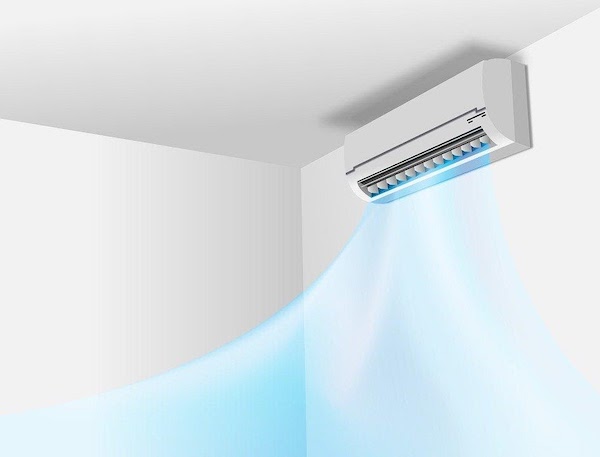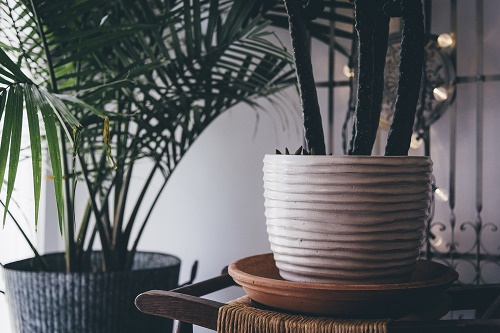High humidity can feel extremely uncomfortable. And if it’s in the summertime, it feels even worse. If you’re dealing with this problem and it’s making your allergies worse, then read this guide to stabilize the levels and keep a tight lid on those allergies.
10 Practical Tips to Kicking Out That Excess Humidity – FAST!
Increased humidity can cause many problems, including health issues and property damages if not taken care of on time.
If you want to learn about humidity, how to maintain the right levels, and other expert tips, read more here. But if you want to jump right into the action, read the tips below:
1. Keep Your AC in Top Condition:
When it comes to tackling excess humidity levels the air conditioner is your best friend. Since high temperatures hold more water in the air, the AC can naturally remove the extra moisture by sending out cool air into the environment.
However, you will have to keep your AC in top condition for this to happen. Make sure it is regularly tuned up and cleaned, and the filter is frequently changed. Anything restricting the airflow will reduce the performance of your AC leading to moisture buildup.

2. Leverage Exhaust Fans:
Ventilation will make a huge difference in keeping the humidity levels at bay. When you shower, do the dishes, wash clothes or cook food over a hot stove, moisture starts building up in the air.
So, install exhaust or ventilation fans in areas where these activities happen and keep them running a little longer after you’re done working. The fans will suck the moisture out.
3. Try Cool Showers:
Hot showers build more moisture because warm temperatures carry more water in the air, as mentioned above. You must’ve felt that humid/hot and heavy air, too, right after turning the shower off, right? Well, that’s the moisture lingering in the air.
We know cold showers can be bone-freezing. That’s why we’re only asking you to turn the temperature knob down just a few notches—nothing that can turn your shower into a literal ice bath.
Doing this will minimize the steam produced by hot water and keep the humidity levels at bay.
4. Fix The Pipes:
Any broken or leaking pipes are a portal for the humidity to come through and invade your humble abode. Whether you’ve got leaking pipes or faucets, fix them ASAP.
Plus, wrap exposed pipes in thick insulators to avoid the forming of condensation. You can find out if a pipe is leaking behind a wall by noticing stains, wet spots, and irregular bills.
5. Clean Your Gutters:
Clogged gutters mean having almost no gutters in your home. The excess water you’re draining out is filling up in the lines and will eventually backflow or seep into the walls.
Both of these conditions will cause moisture along with a bad odour. So keep the gutters clean and, if possible, extend the downspout by 6-8ft at least.
6. Dry Your Clothes Outside:
We always have some clothes that cannot go into the dryer and need to be dried the old-school way—by hanging with clothespins. However, the moisture coming out of those damp clothes will make your home humid.
So, either hang them outside the house, in your backyard, but this may not be possible in some areas due to restrictions by neighbourhood bylaws. So if this is the case with you, use a dehumidifier when drying them inside.
7. Switch Your Plants:
Most plants disperse moisture into the air using a process called evapotranspiration where the water moves from roots to the leaves and then transpires into the air. This increases the level of humidity inside your home. So either relocate them to somewhere open with good ventilation or switch them with different plants.

By different plants, we mean the ones that absorb the moisture. Yes, there are some that do that including Boston Ferns, English Ivy, and Parlor Palm, and as a result, they reduce humidity.
8. Charcoal is Your Friend:
No, we’re not talking about barbecuing; charcoal also helps with dehumidification. And yes, it does work! All you need is to take some charcoal briquettes, put them inside a basket or a can, and that’s it.
Put this DIY moisture absorber wherever you want—preferably in high moisture areas and replace after every 2 months.
9. Open Windows When Possible:
Sometimes, something as simple as sliding that window open can take care of your humidity situation.
Only do this when the air conditioner is not running; otherwise, the cool air will get sucked out, and your AC will have to work harder (and consume more energy) to cool the place down.
10. Turn On the Fans:
Though it’s not a way to get rid of the moisture from your house, turning the fans on will keep the moisture from gathering at one point which is particularly beneficial for people with allergies.
So keep all the fans on when you notice high humidity levels and leave the windows open too so the moisture can escape from there.
Common Signs of High Humidity Levels?
If you don’t know whether your home has high humidity or just the season is humid, then here are a few common signs to help you find out:
· Inspect your ceiling and see if it has any crumbly plaster or wet stains. There may also be some discoloration. If you find anything, the humidity problem may likely be in your house.
· Furthermore, are any floorboards creaking more than usual? Is there any paint peeling from the walls?
· Are you or someone in your family experience any allergies or other health issues like excessive headaches, shortness of breath, chronic cough, or runny nose?
· Is there mould growing in your home? You can smell them. They usually have a smoky/musty scent. Go out, get some fresh air and then come back inside; you’ll be able to smell the mould better.
· Are there any dark or moist spots on the walls or other surfaces?
If you come across more than one of these signs, you’re likely dealing with increased humidity levels indoors. Follow the above-mentioned tips to bring the needle back to the normal readings and curb your allergies.